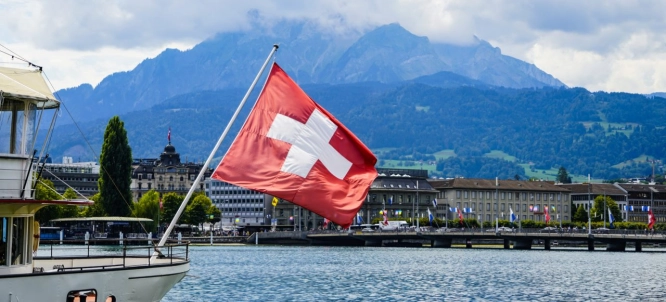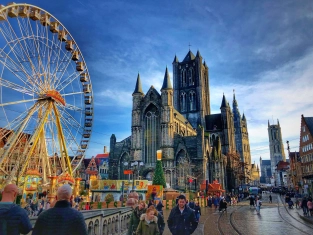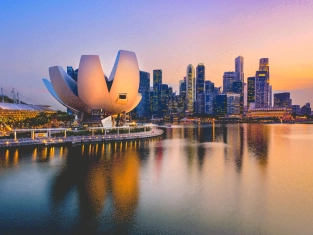by PushtoLearn
What Are The Languages Spoken In Switzerland?
Table of Contents
- The Four Official Languages of Switzerland
- Swiss German – The Most Spoken Language
- Swiss French – Spoken in Western Switzerland
- Swiss Italian – The Language of Ticino
- Romansh – The Smallest Official Language
- How Multilingual Is Switzerland in Daily Life?
- Can You Get By with English in Switzerland?
- FAQ
The Four Official Languages of Switzerland
Switzerland officially recognizes four national languages, with each one dominating specific regions.
|
Language |
Percentage of Population |
Region |
|
Swiss German (Schweizerdeutsch) |
~60% |
Northern, central, and eastern Switzerland |
|
Swiss French (Français de Suisse) |
~20% |
Western Switzerland (Romandy) |
|
Swiss Italian (Italiano Svizzero) |
~8% |
Southern Switzerland (Ticino & parts of Graubünden) |
|
Romansh |
~1% |
Southeastern Switzerland (Graubünden) |
Although English is widely spoken, it is not an official language in Switzerland.
Swiss German – The Most Spoken Language
-
Spoken by: ~60% of the population.
-
Where? Northern, central, and eastern Switzerland (Zurich, Bern, Basel, Lucerne, etc.).
-
How different is Swiss German from Standard German?
-
Swiss German (Schweizerdeutsch) is a collection of dialects that Germans and Austrians often struggle to understand.
-
There is no standardized written form—all official writing (newspapers, laws, books) is in Standard German (Hochdeutsch).
-
Some words are borrowed from French (e.g., Velo instead of the German Fahrrad for "bicycle").
✅ If you speak Standard German, you can communicate in formal settings, but understanding spoken Swiss German may be a challenge!

Swiss French – Spoken in Western Switzerland
-
Spoken by: ~20% of the population.
-
Where? Western Switzerland (Romandy region), including Geneva, Lausanne, Neuchâtel, and Fribourg.
-
How different is Swiss French from Standard French?
-
Very similar to standard French, but with some vocabulary differences.
-
Swiss French uses "septante" (70) and "nonante" (90) instead of the confusing "soixante-dix" (60+10) and "quatre-vingt-dix" (4x20+10) used in France.
✅ If you speak French, you’ll have no trouble in western Switzerland!
Swiss Italian – The Language of Ticino
-
Spoken by: ~8% of the population.
-
Where? Southern Switzerland (Ticino & parts of Graubünden).
-
How different is Swiss Italian from Standard Italian?
-
Almost identical, but with some German and French influences.
-
Uses loanwords from German (e.g., "chifer" instead of "cornetto" for "croissant").
-
Some expressions are direct translations from German and French (e.g., "Licenza di condurre" instead of "Patente" for "driver’s license").
✅ If you speak Italian, you’ll fit right in!
Romansh – The Smallest Official Language
-
Spoken by: ~1% of the population (~37,000 people).
-
Where? Southeastern Switzerland (Graubünden region).
-
What is Romansh?
-
A Romance language with Latin roots, similar to Italian and French.
-
Borrowed many words from German.
-
Not one single language, but five different dialects!
-
The Swiss government tried to create a unified "pan-Romansh" version, but it hasn’t been widely accepted.
✅ Romansh is rare, but it’s still used in education, government, and local communities in Graubünden.
How Multilingual Is Switzerland in Daily Life?
Switzerland’s multilingualism is deeply ingrained in daily life:
✅ Multilingual School System
-
Swiss children must learn at least one other national language in school, plus English.
-
This means most Swiss people are at least trilingual!
✅ Bilingual & Trilingual Cantons
-
Some regions officially recognize two or three languages:
-
Bern, Fribourg, and Valais → French & German.
-
Graubünden → German, Romansh & Italian.
✅ Public Transport & Government Services
-
Train announcements are given in German, French, Italian, and sometimes English.
-
Government documents are available in all four official languages.
✅ Swiss Workplaces & Media
-
Many international companies and banks operate in multiple languages.
-
Swiss TV and newspapers are available in each language area.
✅ Cultural Differences by Language Region
-
Swiss German areas feel more Germanic (Alpine houses, bratwurst, cowbells).
-
French-speaking areas feel more French (cafés, wine culture).
-
Italian-speaking areas feel like Italy (piazzas, Mediterranean vibes).
🚆 Fun Fact: If you take a train from Zurich to Geneva, you’ll pass through all three major language regions in just a few hours!
Can You Get By with English in Switzerland?
Yes, but with some challenges:
✅ In major cities (Zurich, Geneva, Basel, Bern) – Many people speak English, especially in business, tourism, and universities.
❌ In rural areas – English is less common, and knowing basic German, French, or Italian will help a lot.
❌ In small shops & restaurants – Locals often prefer you to greet them in their language first.
🚨 Tip: Always start with a simple "Bonjour" (French), "Hallo" (German), or "Ciao" (Italian) before switching to English. It’s more polite and appreciated!
FAQ
What is the most spoken language in Switzerland?
Swiss German, spoken by ~60% of the population, mainly in the north, center, and east.
What is the rarest language in Switzerland?
Romansh, spoken by only ~1% of Swiss people, mainly in Graubünden.
Is Swiss German different from Standard German?
Yes! Swiss German is a collection of dialects that are difficult for Germans to understand. However, all Swiss Germans can speak and write Standard German when needed.
Can I use English in Switzerland?
Yes, especially in big cities and tourist areas, but knowing some German, French, or Italian is helpful for daily life.
Do Swiss people speak all four national languages?
Not usually! Swiss people learn at least one other national language in school, but most daily conversations happen in their regional language.

